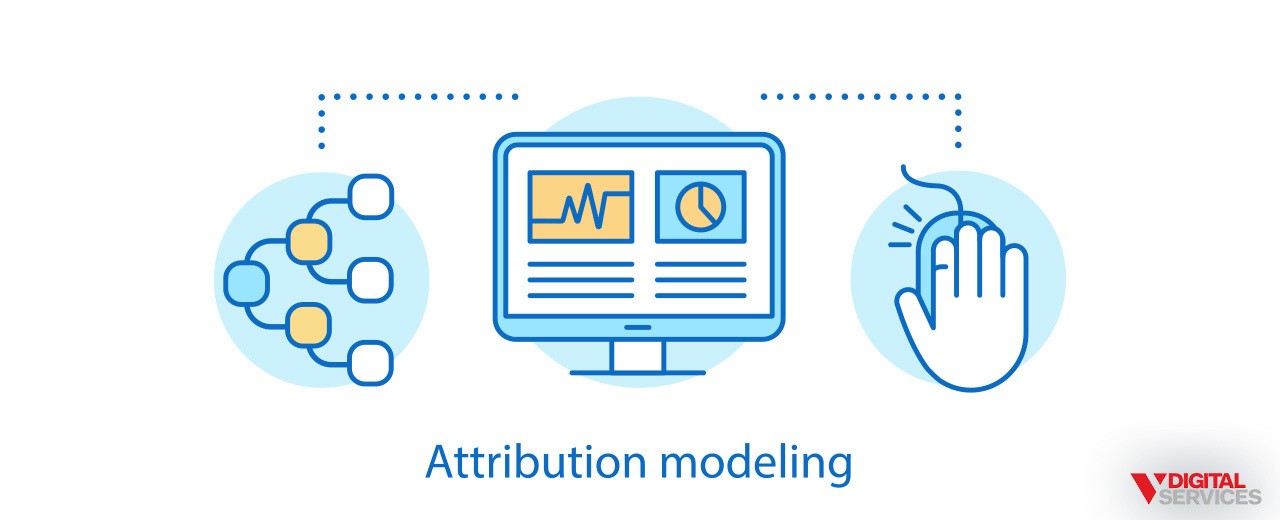Are you running the attribution model you need to reach your marketing goals?
Many business owners struggle to determine which marketing methods to prioritize, which methods to optimize, and which methods to quit. With all of the different tactics and so-called experts floating around the Internet pushing the newest trends, it’s no surprise that many businesses get stuck in the weeds.
This article will help businesses understand the basics of attribution models so they can make the best decisions for their future marketing campaigns and analytics.

What Is an Attribution Model?
An attribution model is the rule, or set of rules, that determines how credit for sales and conversions is assigned to touchpoints in conversion paths. For example, the last-click attribution model in Google Analytics™ assigns 100% credit to the final touchpoints (i.e., clicks) that immediately precede sales or conversions.
Here’s the thing: on the path to conversion, customers may interact with multiple ads from the same advertiser. Attribution models let marketers choose how much credit each ad interaction gets for their conversions. Without an attribution model, empowering a business’s marketing efforts is practically impossible.
It is important to choose a model that best fits your business’s needs. With the wide array of attribution models available, marketers may ask themselves questions like, “Which marketing action gets the credit?” and “What is important to measure?” Keep reading to find out.
“Model Comparison”
Google Ads™ offers several attribution models:
– Last click: Gives all credit for the conversion to the last clicked ad and corresponding keyword.
– First click: Gives all credit for the conversion to the first clicked ad and corresponding keyword.
– Linear: Distributes the credit for the conversion equally across all ad interactions on the path.
– Time decay: Gives more credit to ad interactions that happened closer in time to the conversion. Credit is distributed using a seven-day half-life. In other words, an ad interaction eight days before a conversion gets half as much credit as an ad interaction one day before a conversion.
– Position-based: Gives 40% of the credit to both the first and last ad interactions and corresponding keywords, with the remaining 20% spread out across the other ad interactions on the path.
– Data-driven: Distributes credit for the conversion based on your past data for this conversion action. It is different from the other models in that it uses your account’s data to calculate the actual contribution of each interaction across the conversion path.
The Benefits of Linear & Position-Based Attribution
As more and more people are inundated with ads and marketing strategies, conversions no longer come from single advertisement campaigns.
It is crucial for marketers to incorporate attribution models that holistically calculate all values that lead to conversions.
Personally, I prefer linear models for my campaigns. Linear models function as multi-touch attribution models, meaning they split conversion credit equally across interaction touchpoints along the customer’s journey. In other words, linear models give participation awards to every marketing channel a business uses in a given campaign. Unlike single-touch attribution models (i.e., first or last click models) linear attribution utilizes multi-touch attribution and gives users a balanced look at the whole marketing strategy rather than one single event.
Another effective attribution model is position-based attribution, which assumes that the two most important interactions a customer has with a business are the very first and the very last interactions they have before conversion. Following that hypothesis, position-based attribution assigns fixed conversion credit to the customer’s first and last points of contact with the brand prior to conversion. A position-based attribution model captures the impact of top- and bottom-of-funnel customer activities. This model works well for businesses that expect their prospects to have multiple interactions with their brand prior to purchase.

Conclusion
As a business person, it is important to know your marketing goals. Make sure you select the right analytics attribution model for each marketing strategy you execute. The right attribution model will provide you with valuable information to increase ROI from your strategy.
Feeling unsure about which attribution model is right for your account? Are you overwhelmed with articles and trends telling you what the right solution is for you? V Digital Services is a full-service digital marketing agency for businesses of all types, sizes, and industries. We provide a diverse range of services that include social media management, organic SEO, local SEO, paid media, website design, website development, and more.
Consider us your go-to team for a smart digital strategy tailored to your goals. Whether you want to bolster foot traffic, venture into e-commerce, or improve your online reputation, V Digital Services will help you get there.
Contact us today to find out how we can help your business grow.




 PREVIOUS
PREVIOUS